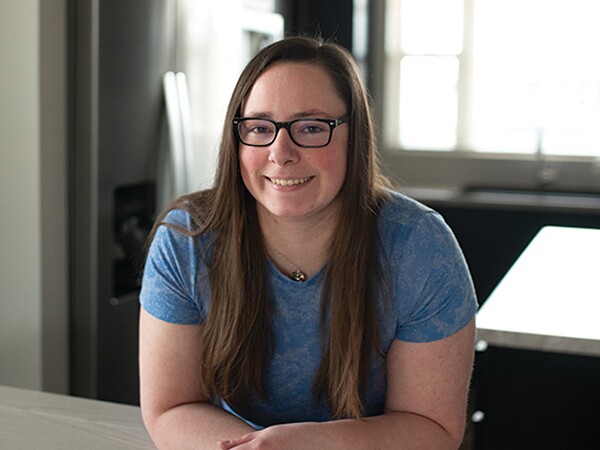Moving from renting to owning a home is an exciting step, and it can be a great investment opportunity as well. But saving enough cash for a down payment can seem daunting.
Depending on the type of loan you qualify for, you may need to save a significant amount—but that can have major benefits for you as a homeowner. Exactly how much do you need for a house down payment? The sweet spot is different for everyone. Sometimes it's wise to keep saving and look for a house later, when you have a large down payment saved. In other cases, purchasing a house now, even with a smaller down payment, may be the most prudent choice.
What is a required minimum down payment for a house?
Most first-time buyers finance their home purchase with one of a few kinds of home mortgage loans. Each type has its own required minimum down payment.
- Conventional loans: 3%
- FHA loans: 3.5%
- VA loans: 0%
- USDA loans: 0%
- Jumbo loans: 10%, up to 25% based on lender requirements
In each case, factors like your debt, your income and your credit score can make you a higher risk or a lower risk to lenders. Larger down payment requirements are part of how lenders mitigate risk, so your particular loan application may result in a different required down payment.
Keep in mind that first-time homebuyer programs may be available in certain states to help cover part of the down payment or provide financial assistance. These programs often offer grants, low-interest loans or tax incentives to make homeownership more accessible.
What's the typical down payment on a house?
For first-time homebuyers, the median
If you are considering a down payment in that range, you're in good company, but other factors may push your preferred down payment size up or down.
In regions with a lot of jumbo loans due to high housing costs, you're likely to see slightly higher percentages for down payments. Highly populous areas with high housing costs like Hawaii, California and Colorado have some of the higher
Do you have to put a 20% down payment on a house?
In many cases, you don't need to have a 20% down payment to purchase a home. However, there are reasons why it's often recommended:
- Likely to qualify. Buyers with a 20% down payment are seen as a safer risk to banks, meaning they often will qualify for better terms on their loans.
- Less risk. Buyers with a 20% down payment are at less risk for having their home loan "underwater," or owing more on the house than it's worth. The 20% down payment is a hedge against changes in the real estate market that could reduce the home's value.
- Less debt. A 20% down payment also means you're taking on less debt than you would with a 5% or 10% down payment. As a result, your monthly payments are usually smaller.
- Avoid PMI. 20% is the minimum down payment to avoid private mortgage insurance (PMI), which adds an additional monthly premium until you've reached at least 20% equity in your home and have the PMI removed.
While putting 20% down can be a great option for many, it's not the only one. You have many different loan options, ranging from a
- Savings. A smaller down payment can leave more of your savings available for unexpected repairs or emergencies. If you can't pay cash for urgent repair costs and have to put those charges on a credit card, you may end up paying significantly more due to a card's typical high interest rates.
- Market investment. During low mortgage interest rate seasons, some people opt to finance more of their home at the low interest rate and free up other savings to be invested in the market. If, for instance, you are buying a home with a 4% mortgage interest rate but can consistently get at least 7% return on your investments, it often makes sense to pay a smaller down payment and invest other cash in the market. This benefit becomes less applicable as mortgage interest rates rise.
- Securing your dream home. Sometimes a home becomes available that really stands out to you. For example, it could be priced well below market or feature an unusual element that you value, like a swimming pool. If you're unlikely to find another home that fits your needs as well anytime soon, it may make sense to buy now with a smaller down payment.

Must qualify for membership in TCU.
Any data or personal information collected by websites other than Thrivent is not covered by Thrivent's privacy policy. We recommend you read the privacy policies of those sites as they may be different from Thrivent's policy.
What's the best home down payment for you?
The good news is, different down payment amounts all have their benefits, provided you can hit the minimum down payment required for your chosen mortgage loan. Make sure you've considered the following:
- How much have you saved for your down payment, and given the house you're considering, how much would be left as liquid cash for unexpected costs, repairs or emergencies?
- What is the market doing? Are homes plentiful or scarce, and are interest rates going up or down?
- How is your current housing situation? How urgent is it for you to move, and how important is it to move into a purchased home that you'll stay in for multiple years?
- What are your long-term goals, both for purchasing a home and other goals down the road?
Once you've considered these factors, you'll want to talk to your lender and make sure your target down payment is in line with the terms of your loan pre-approval. A home is one of the biggest expenses in your life, so it's a
Strategies for saving and funding your down payment
Getting a down payment together may seem daunting, but when taken one step at a time, you can start reducing expenses and
- Evaluate your expenses. Identifying some expenses to cut—even a small, monthly subscription here or there—can give you the option to transfer $5 or $10 per month to a savings account. These small cuts can add up.
- Start saving. By tracking your expenses, you will start to notice how much cash you usually have by the time a new paycheck hits. You can automatically transfer some money to a savings account when your paycheck arrives or wait to see how the month's expenses play out and transfer any leftover money to savings once your new paycheck replenishes your account.
- Look for ways to earn more. Many people who want to aggressively save also look for impactful ways to change their financial situation. You might be able to negotiate your salary at work, work overtime, get a side job or higher-paying job, or even move in with family or friends to cut down on rental costs and free up income to put toward your down payment savings.
Set goals for yourself and continue noticing where you can reduce expenses while maintaining your quality of life.
Prepare for major life milestones with confidence
Because every family chooses to switch from renting to buying for different reasons, each one will choose a different type of down payment amount. Paying attention to the impact of your down payment, saving diligently and thinking through your home purchase decision are important parts of the process.
Having a plan can help you feel more confident when making big financial decisions, possibly for the first time. Connect with a







